12 practical steps towards food self-sufficiency to turn your home into a micro-farm and save up to 3,500 euros a year
At myFarm, we think a lot about the future and try to imagine what it might look like. We believe that the trend is back towards local and even ultra-local products, and that in the next few years our homes will look more like micro-farms capable of producing a certain proportion of our food. In this article, we detail 12 practices for transforming your home into a micro-farm to bring you closer to food self-sufficiency.
The importance of acquiring food-producing habits
According to the IPCC, the planet will be a very different place by 2050. We’re no longer just talking about global warming, but climate disruption. Increasing droughts, floods and sea levels. Cooler areas are becoming wetter and drier, and dryer areas increasingly arid (1). Some people have believed and still want to believe that economic growth will lead to a slowdown in greenhouse gas emissions, but this has still not been established today. This leads seasoned observers to believe that degrowth is the only way out. If the term “degrowth” can be frightening, let’s talk instead about decarbonizing our consumption.
A decarbonized world is certainly an agricultural world. Not with imposing combine harvesters scouring hectares of monoculture fields, but with a host of little hands cultivating fruit and vegetables on the walls of their buildings and in every little space available. Understanding nature and producing food will no longer be just a job, but everyone’s duty.
In this new world, your financial or marketing skills may not be as valuable as those offered by food producers. So why not get started today and start integrating habits that produce your own food into your daily routine? You don’t have to wait for the future to turn your home into a micro-farm, because there are plenty of possibilities available today. That’s what this article is all about.
A new form of investment
If you’re not too keen on green talk, or if 2050 seems too far away, here’s another angle. At a time when savings are going nowhere and inflation is driving down their value a little more every day, a new generation is emerging. a new form of investment that will become the norm This is investment that reduces expenditure. In this article, you’ll read about various investments you can make right now to significantly reduce your food expenses while minimizing the effort involved. With a little skill, it’s now possible for a working person and head of household with little free time to produce a good part of their own food. And it can pay off: up to 3,500 euros a year.
The benefits of food self-sufficiency
Being self-sufficient in food offers invaluable advantages:
- Each step towards autonomy is a step towards ecology, and above all a significant saving for your household budget. If, little by little, you manage to incorporate several of them into your habits, the savings can be very worthwhile. Up to 3,500 euros per year.
- Producing your own products means protecting yourself against inflation. When prices rise, it’s not just raw materials that become more expensive, but above all the means of production. For you, once you’ve acquired your tools, only your raw materials increase in price.
- Being independent also means being in control of your food. You regain control over what ends up on your plate. This means eating healthier: less sugar, less salt, less fat and fewer pesticides.
- You become more resilient. In the event of another epidemic, you and your household can go months without leaving home. If a new crisis causes prices to soar, you’ll absorb the shock more gently than your neighbors.
- Producing your own food provides intense, daily satisfaction. Our brains secrete dopamine, the happiness hormone, as a reward for our work. It’s thanks to her that Homo sapiens has been able to find the motivation to hunt and gather for sustenance over the millennia.
Integrate food autonomy practices into daily life
Moving towards food self-sufficiency requires a certain amount of your time and energy. The first time you undertake one of these activities, the time and energy required will be relatively high, as it is every time you embark on something new. But as these practices take root in your habits, they will require less and less energy and time (see this excellent book to integrate healthy habits into daily life). Resist the temptation to do everything at once, and proceed incrementally, integrating one practice at a time.
Each of the self-sufficiency practices documented in this article has been tested, approved and integrated into the daily life of an active person with a medium-sized home and a small garden. The times indicated are therefore those of a person who has perfectly integrated the various practices into his or her routine. They take almost no energy from him. On the contrary, they have become rituals that give him great pleasure and gratification.
For each of the 12 practices, we focus on the different activities to be carried out, the time and space required, the costs, the dependencies, the savings generated, the automation possibilities and finally the non-financial benefits. Buying tips will be offered, each one the fruit of market research and testing in real-life conditions. The prices listed are those in effect at the time this article was written. They are for information purposes only.
Protein
Space
Garden
Time
20 min/week
Economy
150 €/year
Espace
Garden
Time
20 min/week
Economy
150 €/year
This is an excellent step towards food self-sufficiency if you have a garden. Raising laying hens at home is very easy and provides a staple in our diet: fresh eggs.

Activities and time required
- Feeding chickens: 2 minutes a day
- Opening and closing the henhouse: 1 minute per day, unless you have an automatic door (budget €170).
- Emptying the droppings tray and changing the litter: 3 minutes per week
- Cleaning the henhouse: 15 minutes per month with a plastic henhouse, 30 minutes per month with a wooden henhouse
Total 20 to 30 minutes per week on average, depending on your henhouse.
Space requirements
10 to 20 m² per hen, with a minimum of 2 hens.
Fixed costs
- A henhouse: minimum €300. For this item, we recommend investing in quality from the outset, to avoid costs later on. And while wood may appear more aesthetically pleasing, plastic is far more efficient and easier to maintain. It’s also less likely to harbor parasites. We highly recommend these hen houses.
- Hens: €10 per hen
Variable costs
- Feed: €2 per hen per month
- Water: negligible, especially as rainwater is ideal
- Bedding: €5 per month (can be replaced with ferns, hay, straw or moss)
Possibility of prolonged absence
For an absence of more than 3 days, it is necessary to find someone to feed the chickens.
Dependencies
Since you can easily find litter in nature, you’re not dependent on a litter supplier. You are solely dependent on your seed supplier, but seeds have a shelf life of over a year.
Savings – For a 4-person household
- 4 hens yield 1,000 fresh eggs a year. An egg in the supermarket costs around €0.30, which means an annual saving of €300.
- 4 hens cost €13 a month, or around €150 a year.
- You save about 150 per year from the 3rd year onwards, if fixed costs are taken into account.
Profitability index
8 €/hour (with a good henhouse and automated door)
Automation opportunities
Daily activities can be automated with an automatic door and automatic feeder.
Other benefits
-
- Collecting eggs from the henhouse provides a special sense of well-being, as does eating a fresh boiled egg.
- Chickens liven up the garden and delight the children, who learn how to look after them, feed them and collect their eggs.
- They eat most of your kitchen waste, drastically reducing the size of your dustbins. And in return, their droppings provide rich fertilizer for your plants.
Space
Cupboard
Time
10 min/week
Economy
830 €/year
Space
Cupboard
Time
10 min/week
Economy
830 €/year
The Food and Agriculture Organization of the United Nations (FAO) recommends eating insects, not only for their ecological benefits, but also for their health benefits. Healthy and nutritious, they are rich in fatty acids, proteins, vitamins, fibre and minerals. Does eating insects seem trivial? Yet the FAO estimates that over two billion people around the world already consume insects on a regular basis (2). In fact, Member States have just approved the use of miller’s worms as a novel feed in 2021 (3). Whether you like it or not, insects are part of the food of the future. And the great thing is that you can easily produce them at home!
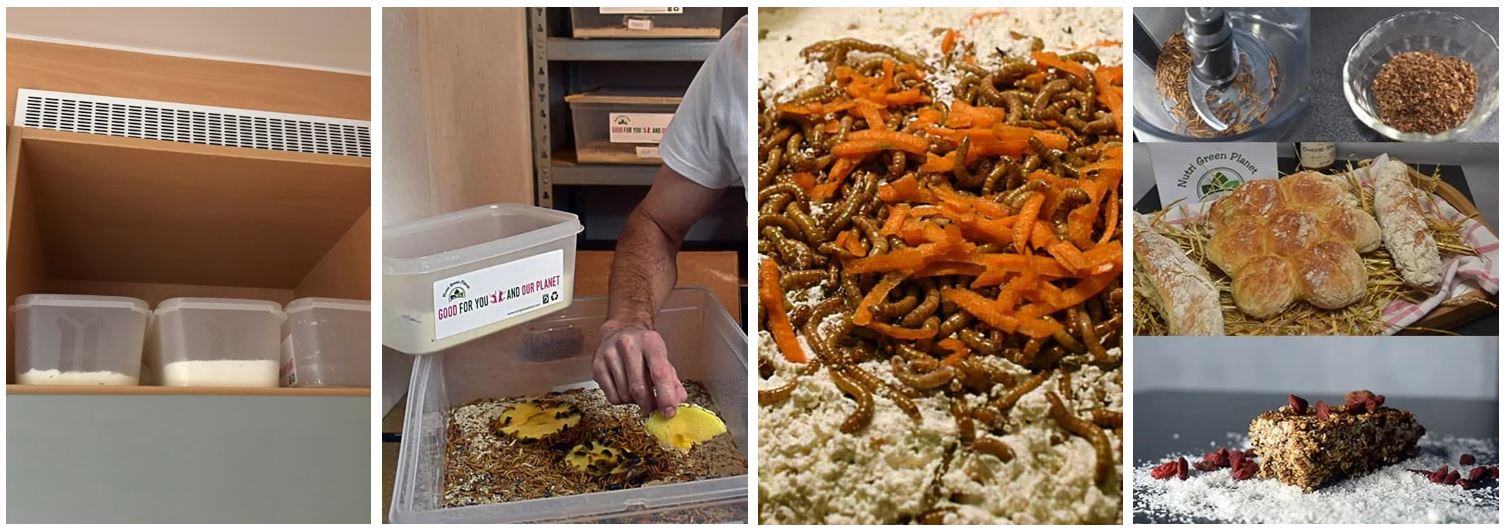
Activities and time required
- Feeding worms: 2 minutes every 3 days
- Sorting worms: 1 hour every 3 months
- Harvesting worms: 10 minutes every 3 months
Total of 10 minutes per week on average.
Space requirements
A closed cupboard in a place where the temperature is at least 20°C, with space for 3 boxes measuring 23 cm x 14 cm x 12 cm.
Fixed costs
- 300 sandfly larvae: €20
- 3 plastic boxes: €10
We ordered our kit here.
Variable costs
- 5 kg organic flour: 6 € / year
- Organic fruit and vegetable peelings: €0
Possibility of prolonged absence
If you’re away for more than 3 days, you’ll need to find someone to feed the worms.
Dependencies
Since you can easily find worm food in nature, you’re not dependent on fruit or vegetable peelings. You remain dependent on your flour supplier, but flour has a very long shelf life and your worms can stay in the same flour for up to a year.
Savings – For a 4-person household
A cycle lasts around 3 months, at the end of which you’ll produce around 700 g of whole insects or insect meal. At present, 100g sachets are available for around €30. This means you’ll produce €210 worth of insects every 3 months. Deducting variable costs, this amounts to 830 per year. Fixed costs are more than recovered in the first cycle. Whole, they can be sprinkled with curry powder or paprika to serve as an aperitif or to liven up your salads. Reduced to flour, you can replace up to 20% of your cereal flour with insect flour for your breads or pastas.
Profitability index
100 €/hour
Automation opportunities
Raising worms at home will soon be even easier with initiatives such as Livin Farms’ Hive (parameter optimization and automation of worm sorting and harvesting).
Other benefits
-
- The FAO describes insect products as healthy and highly nutritious. And since their production has a reduced ecological footprint, they are a source of protein that supports the transition to a more sustainable food system.
- If you get the taste for it, you can easily increase your production by setting aside more larvae for each cycle and increasing the size of your boxes.
Space
Cupboard
Time
3 min/week
Economy
130 €/year
Space
Cupboard
Time
3 min/week
Economy
130 €/year
As well as being delicious, yogurt is a very healthy product: it’s rich in protein and a good source of calcium, phosphorus and vitamins (A, B and D). Homemade plain yoghurt is also low in calories, at 45.5 Cal/100 g, and contributes to intestinal well-being.
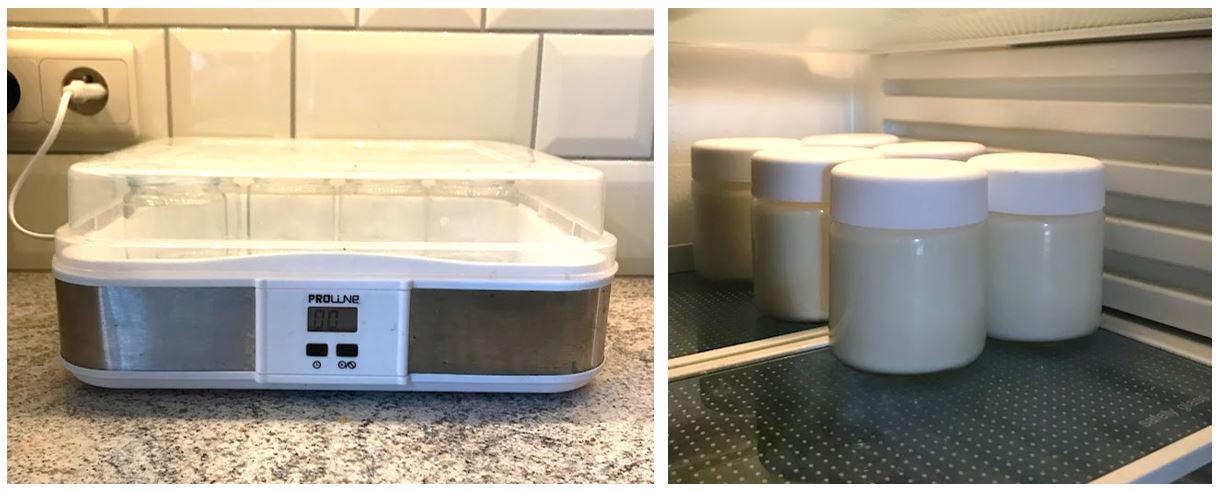
Activities and time required
- Fetching fresh milk and yoghurt: done at the same time as weekly shopping
- Mix milk with 3 teaspoons of yogurt: 1 minute per week
- Pour the milk into the yogurt maker and start the program: 1 minute per week
- Rinse equipment: 1 minute per week
Total of 3 minutes per week.
Space required
A space of 20 cm x 30 cm ideally on the kitchen worktop.
Fixed costs
- Yogurt maker: €30 (we recommend this one, simple and efficient)
Variable costs
- 1 liter of fresh whole milk: €1.20 per week
- 1 fresh whole yoghurt: €0 if you use 3 teaspoons of yoghurt from the previous batch, otherwise €0.40 per week.
Possibility of prolonged absence
Yes.
Dependencies
You’re not dependent on a yogurt supplier, because if you manage your batches well, you can reuse yogurt from a previous batch. On the other hand, you remain dependent on a milk supplier.
Savings – For a 4-person household
A liter of fresh organic yogurt costs €1.20, i.e. €2.50 less than in the shops. One liter of yoghurt is equivalent to 2 pots of yoghurt per week per person for 4 people. If you count one batch per week, that comes to a profit of 130 per year. The yogurt maker pays for itself in 3 months.
Profitability index
50 €/hour
Automation opportunities
Buying a yogurt maker is already the best possible way to automate yogurt production.
Other benefits
-
- You may be used to buying yoghurts in the supermarket, thinking you’re doing something good for your health. But these flavored products are more like treats than health foods. Making your own yoghurts means you can guarantee their freshness, and therefore their lactic ferment content for intestinal benefits, as well as control their composition. This allows you to complement them with quality ingredients such as fresh fruit, dark chocolate shavings, good honey or a vanilla pod.
- Your yogurt maker uses glass jars that can be reused over and over again, which means you use much less waste.
Space
Negligible
Time
10 min/week
Economy
180 €/year
Space
Negligible
Time
10 min/week
Economy
180 €/year
If war broke out tomorrow, or a new epidemic caused a health and economic crisis that deprived us of our supermarket habits, cheese would undoubtedly be one of the foods most sorely missed. But guess what? You can do it at home! And very easily, too. There are several ways to make your own cheese: with your own utensils, with a cheese maker or with a food processor.
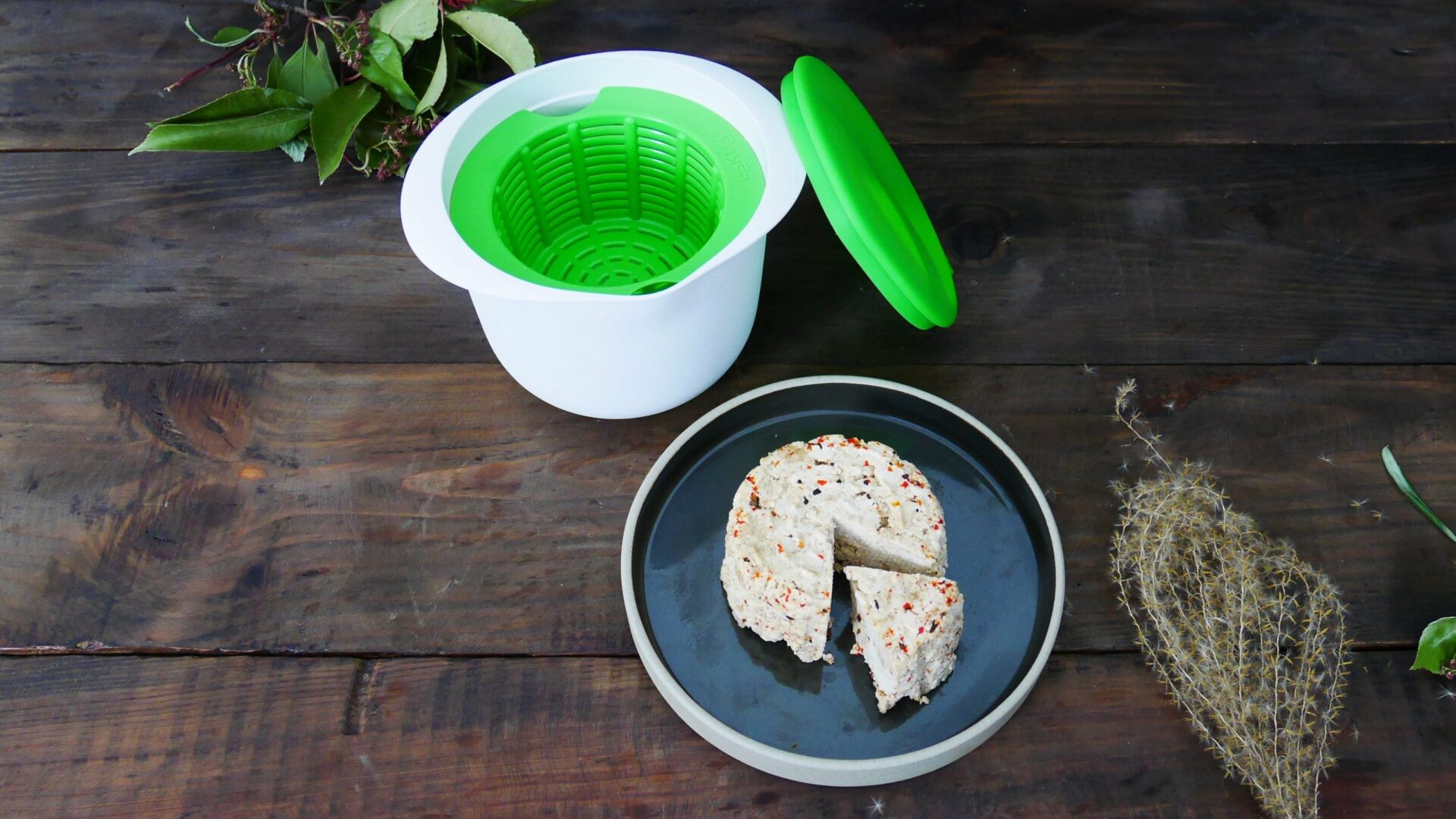
Activities and time required
- Preparing your cheese: 2 x 5 minutes per week
Space required
Negligible.
Fixed costs
- Cheesemaker: €30 if you don’t have a food processor. We recommend this cheesemaker.
Variable costs
- 2 liters of fresh whole milk: €2.40 per week
- Salt and white vinegar: negligible
Possibility of prolonged absence
Yes.
Dependencies
Milk supplier
Savings – For a 4-person household
With 2 liters of milk, you get 2 cheeses of 200 g for 2.40 €. These cheeses would have cost a total of €6 in the shops. This results in savings of 180 per year. The cheesemaker pays for itself in 3 months.
Profitability index
21 €/hour
Automation opportunities
Producing a whole range of cheeses at home will soon be made very easy with initiatives such as the Fromaggio, the first automatic cheesemaker for domestic use.
Other benefits
-
- You can make any cheese you like and flavour it with any sauce you like. You can vary milk types, rennet types and fillings. What’s more, you have absolute control over what you eat.
Space
Garden
Time
30 min/week
Economy
220 €/year
Espace
Garden
Time
30 min/week
Economy
220 €/year
Yes, it’s now possible to raise edible fish at home thanks to aquaponics. And it’s accessible to any household with a garden, as very little space is required. See point on aquaponics.
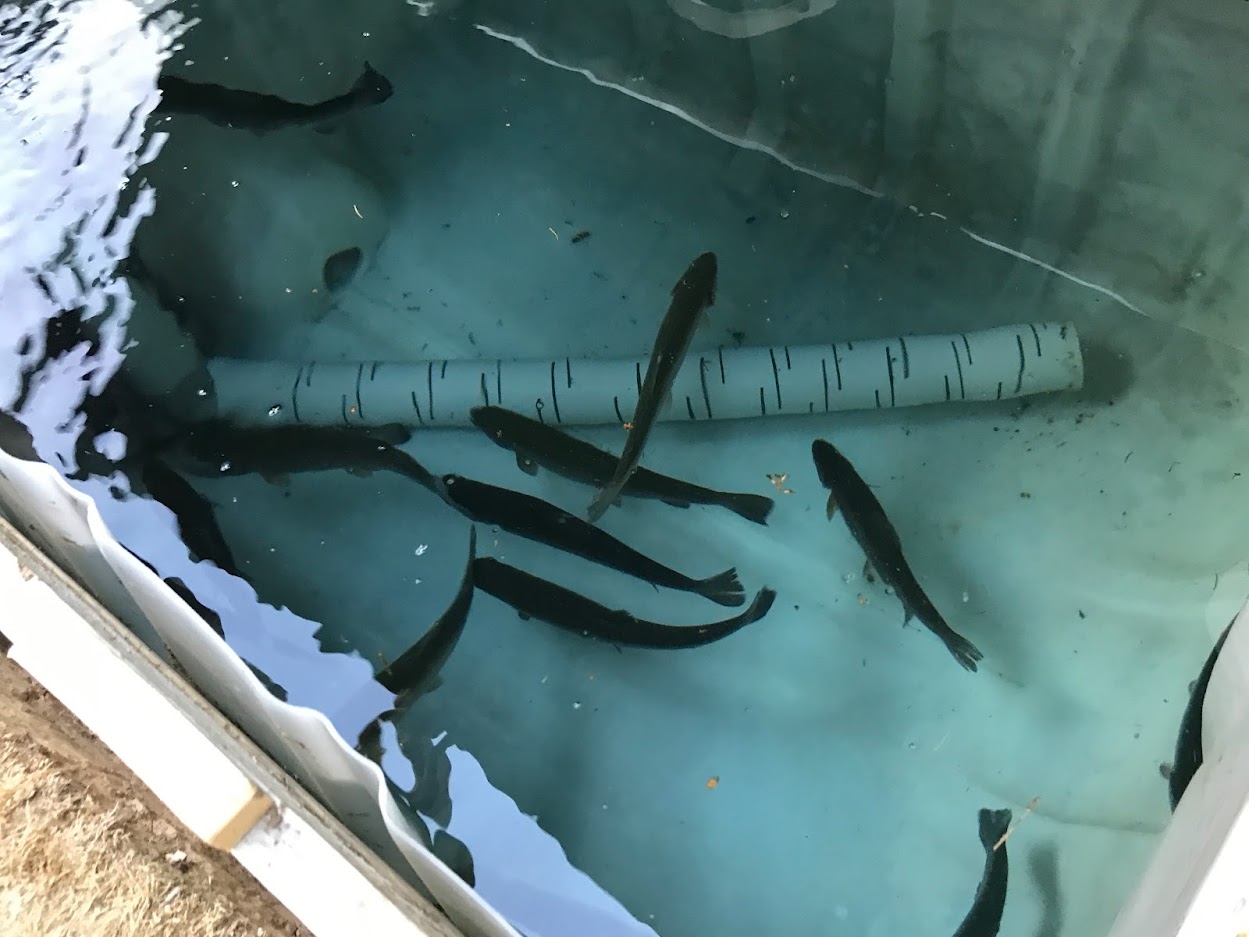
Space
Garden
Time
35 min/week
Economy
670 €/year
Espace
Garden
Time
35 min/week
Economy
670 €/year
– Not tested –
Raising rabbits has everything it takes to be part of our micro-farm, as it requires few resources (a hutch and hay), takes up little space (a few square meters), and is highly productive. One male and one female are enough to produce 24 to 36 young rabbits a year, which are consumed just 90 days after birth. Add a second female and you have tasty meat every week. A whole rabbit is sold at the supermarket for €11.2, which represents a saving of around 670 per year not including costs.
The reason we haven’t tested it yet is that you have to be present every day, which is a constraint during vacation periods.
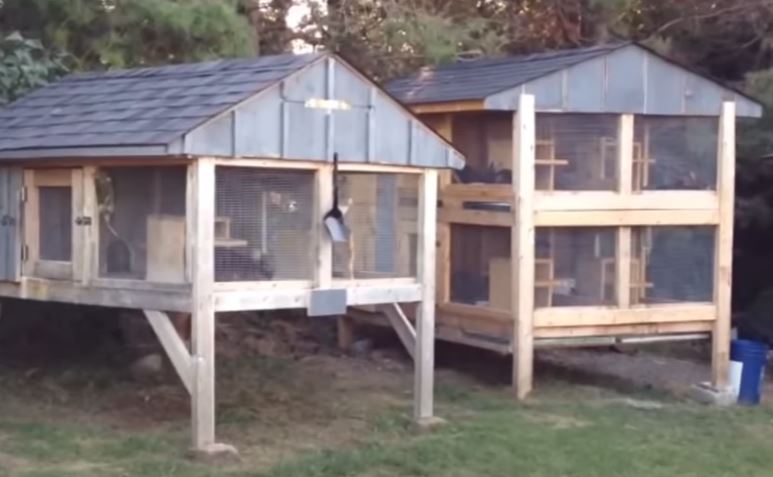
Space
Large garden
Time
–
Economy
–
Espace
Large garden
Time
–
Economy
–
– Not tested –
Raising goats for their milk requires more space, but could one day be part of our micro-farm.

Vitamins
Space
Garden
Time
2 hours/week
Economy
90 €/year
Espace
Garden
Time
2 hours/week
Economy
90 €/year
Permaculture is a method of growing plants inspired by natural ecosystems for efficient production with no negative impact on the environment. It consists of a series of techniques such as mulching to maintain a rich, living soil, mound cultivation, the right combination of plants or the ecosystem balance between plants, trees, insects and animals for greater resilience.
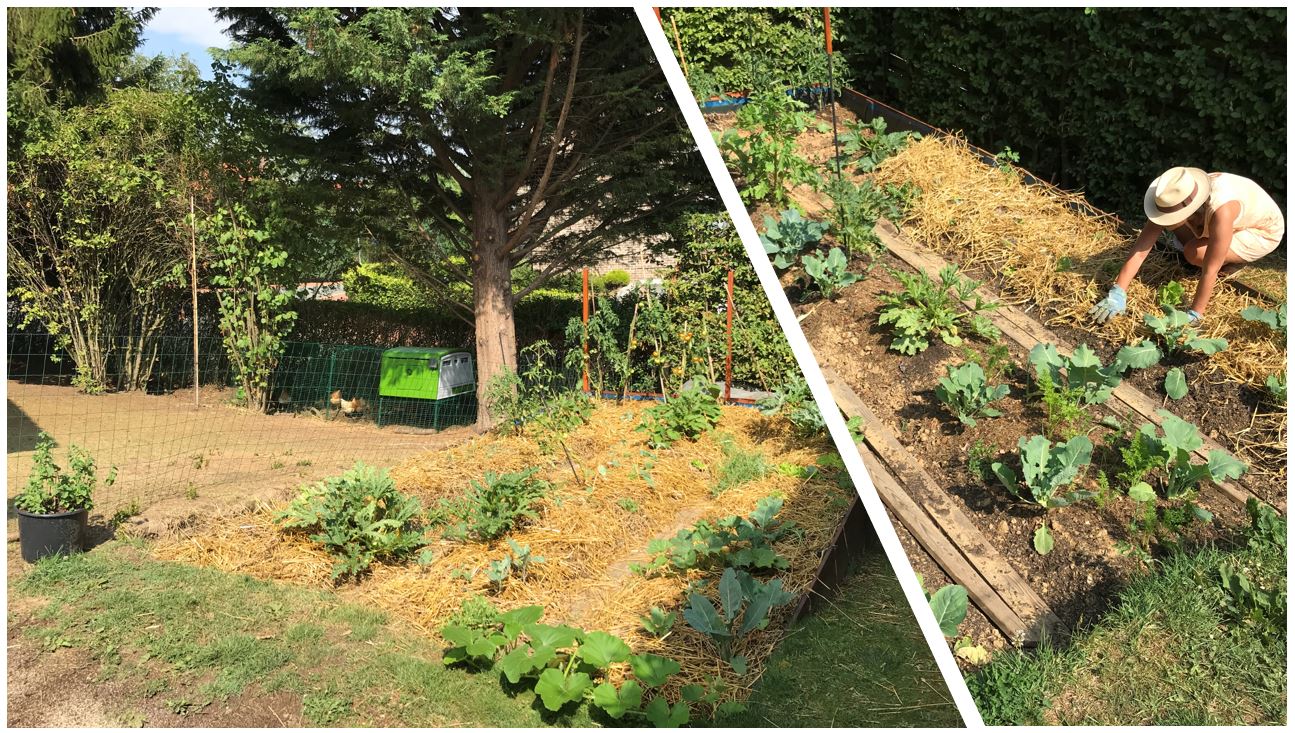
Activities and time required
- Be well informed. As permaculture is a complex field, this step can take some time.
- Shaping your beds
- Mulch your soil
- Enrich your soil with compost or with the surface composting technique
- Preparing seedlings
- Watering seedlings
- Think about how to organize the vegetable garden to encourage good associations between plants.
- Transplanting seedlings
- Protecting vulnerable plants
- Watering plants
- Maintain certain plants (install stakes, remove suckers, etc.)
- Check for diseases (mildew, powdery mildew, rust, etc.)
- Treating pest attacks (slugs, caterpillars, aphids, rodents, mammals, parasites, fungi, etc.)
- Harvesting
Total of 2 hours per week outside winter for a vegetable garden of around 16 m².
Space requirements
For a household of 2 to 4 people, you’ll need a minimum of 16 m² to obtain 3 attractive mounds 5 m long.
Fixed costs
- Gardening equipment (secateurs, shovels, gloves, watering can, grelinette, etc.): approx. €100
- Sowing frame (optional): €75
- Growing tray for herbs (optional): €120
- Greenhouse (optional): between €500 and €4000 depending on size and quality. Absolutely avoid low-end greenhouses, which will end up costing you a lot of money.
- Trellis and stakes (optional): €50
- Irrigation system (optional): €80
Variable costs
- Mulch: €30 per year
- Seeds: €25 per year
- Potting soil: €30 per year
Possibility of prolonged absence
Yes, subject to the risk of summer drought.
Dependencies
Connoisseurs can do without potting soil by optimizing their compost production, and produce their own mulch (dried leaves, dried grass, wood shavings, etc.). They also use reproducible seeds, making them seed-independent.
Savings – For a 4-person household
- NB: prices shown here are for non-organic products. If you’re in the habit of buying organic products, the savings can double.
- It’s very difficult to estimate the gains from a vegetable garden, given the number of variables involved (the effort you put into it, your level of experience, the presence of pests, the weather, etc.). But let’s say that on 16 m² in one year, with some experience and good weather, you can harvest 20 kg of zucchinis, 10 kg of cucumbers, 15 kg of tomatoes, 3 kg of leeks, 5 kg of eggplants, 20 lettuces, 2 kg of beans, some cauliflowers, turnips, carrots, radishes, and parsley, chives, dill, mint, thyme, rosemary and sage. You can count on a production of around 60 kg. At an average of €3/kg and variable costs of €90 per year, this represents a saving of 90 per year.
Profitability index
1 €/hour
Automation opportunities
Automating the upkeep of a vegetable garden means practicing aquaponics. With this system, many activities in the vegetable garden are either automated or no longer necessary. Find out more about aquaponics in the next section.
Other benefits
-
- The vegetables you grow using permaculture are organic vegetables. If you can never be sure what this name means when you shop in the shops, here you know perfectly well: these are vegetables raised without pesticides or chemical fertilizers, and with a carbon footprint close to zero.
- You’ll find that watching your vegetables grow every day is at least as much fun as eating them.
Space
Garden
Time
34 min/week
Economy
980 €/year
Espace
Garden
Time
34 min/week
Economy
980 €/year
Aquaponics is a cultivation technique that is spreading rapidly around the world, and is gaining more and more fans due to its innumerable advantages. It combines the cultivation of plants and the rearing of fish for faster, more efficient production than a conventional vegetable garden.
Root irrigation considerably reduces the risk of diseases such as mildew, powdery mildew or rust, eliminates any risk of drought and means you never have to worry about watering.
And since there’s no soil, there’s no need to worry about crop rotation, no big bags of potting soil to move, no weeds to pull, no mulch to maintain, no soil to clean up from crops. A dream for every budding gardener.
A few players offer turnkey aquaponics for domestic use: myFarm in Belgium, myFood in France.
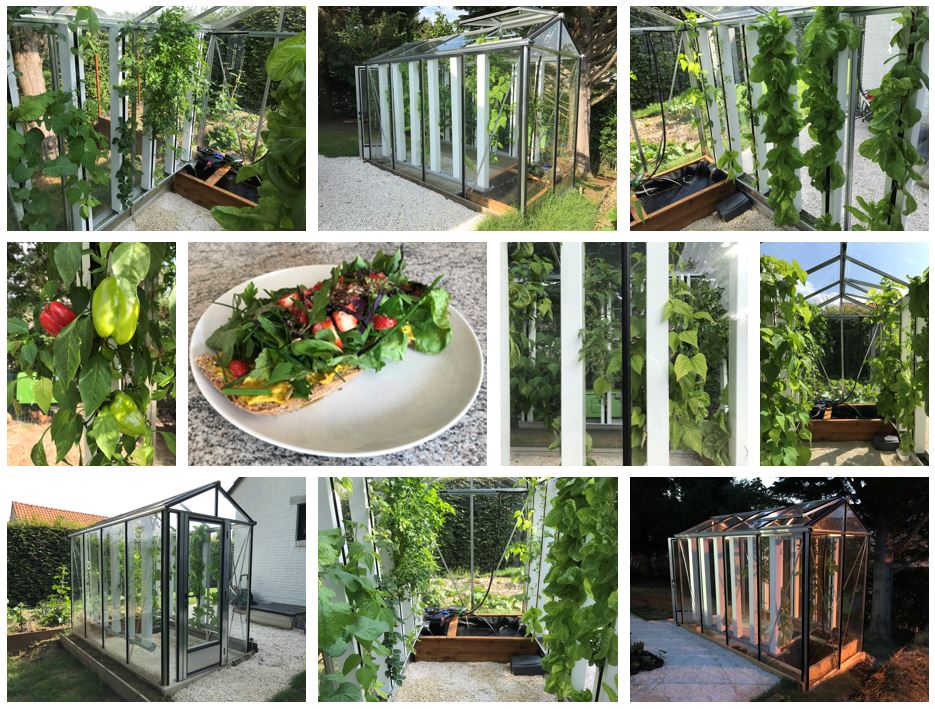
Activities and time required – With a 5 m² myFarm greenhouse
- Check that plants are healthy and that water drains normally: 5 minutes per week
- Harvesting: 2 minutes a day
- Remove dead leaves: 3 minutes per week
- Water test: 1 minute per week
- Filling the vending machine with food: 1 minute per week
- Preparing seedlings: 5 minutes a week
- Moisturize seedlings: 1 minute per week
- Renew tower plants: 3 minutes per week
- Empty purge valve and clean filter: 5 minutes per month
Total of 34 minutes per week.
Space required
5 m² garden or terrace.
Fixed costs
- Aquaponics greenhouse: €2800 (or €1500 if you already have a greenhouse)
- Fish: €75
Variable costs
- Fish food: €30 per year
- Additional nutrients (calcium, iron, magnesium, potassium): €35 per year
- Seeds: €15 per year
Possibility of prolonged absence
The basic feeder has a capacity of one week, but can be set to a low flow rate to last longer. For an absence of more than 2 weeks, it’s best to find someone to come and fill the feeder. However, fish can go up to 2 weeks without eating. You can also replace the feeder with a larger one.
Dependencies
As mentioned above, it is possible to become seed independent. It’s also possible to produce your own fish food from what you find in nature. Among additional nutrients, calcium can be supplied by tap water and potassium by dried banana peels. Iron and magnesium are harder to find on their own in nature.
Savings – For a 4-person household
- Daily source of lettuce of all kinds (4 x 2 € per week), kale (2 x 2.5 € per week), parsley (1 x 2 € per week), mint (1 x 1.5 € per week), basil (1 x 2 € per week), coriander (1 x 2 € per week) = 800 € per year
- Regular source of strawberries (8 x €5 per year), beans (6 x €2.5 per year), chard (2 x €1.5 per month), pak choi (2 x €2.5 per month) = €120 per year
- Occasional source of peppers, cherry tomatoes, chillies, cucumbers, kohlrabi = €50 per year
- Annual source of tomatoes, eggplants, cauliflowers = €90 per year
- NB: these estimates are based on a harvest period extending from spring to autumn.
- With variable costs of €80 per year, this amounts to a saving of 980 per year. Fixed costs pay for themselves within 3 years.
Profitability index
30 €/hour
Automation opportunities
The purchase of a myFarm greenhouse is already the best possible automation of fruit and vegetable production.
Other benefits
-
- If you can enjoy a rich and varied salad of lettuce, arugula, parsley, chives, lemon basil, mint and a few strawberries, all freshly picked by you in your little greenhouse that represents your daily escape, placed on a nice slice of fresh homemade bread and spread with homemade fromage frais, you’ll know absolute happiness at least once a day. And all for pennies.
- Turnkey aquaponics requires no prior knowledge, and experience is acquired much more quickly than with a conventional vegetable garden. In just one year, you’ll already be an expert.
- Once you’ve got the hang of your aquaponics system, you can introduce edible fish into your pond. In northern Europe, the fish best adapted to the climate are trout. This is quite sensitive to water parameters, but once your system is stable, it’s very easy to raise trout in aquaponics, thanks to the fact that the water is continuously filtered by the plants and is highly oxygenated. Trout production is extraordinarily efficient: they gain 1g of mass for every 1g of feed given, and gain 30% mass per month. You buy your trout at €6/kg from a fish farmer. Their food costs €2/kg and you expect their volume to double. You’ll get fresh, river-smelling fish for €4/kg. The volume of the myFarm greenhouse will enable you to produce around 20 kg of trout over the year. At €15/kg in a supermarket, that’s an additional saving of €220 per year..
Space
Garden
Time
10 min/week
Economy
240 €/year
Espace
Garden
Time
10 min/week
Economy
240 €/year
It’s possible to plant an entire orchard in a small space by selecting the right species. A fruit tree is usually grafted onto another tree, called the rootstock. This makes the tree stronger and ensures better harvests, and gives you the advantage of choosing the right size. We speak of low-stem, mid-stem and high-stem. Low-stemmed fruit trees can reach 2 to 4 metres in height and are ideal for small gardens. To further optimize space, they can even be used to create a fruit hedge to replace your conventional hedge.
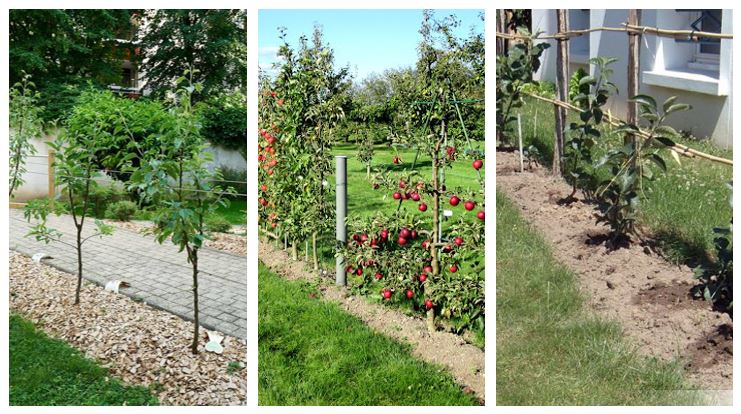
Activities and time required
- Tree pruning: 15 minutes per tree per year
- Harvesting fruit: 15 minutes per tree per year
Total of 10 minutes per week on average for 6 trees and 10 shrubs.
Space requirements
You can already have a beautiful orchard with 6 trees and 10 shrubs on a 500 m² plot.
Fixed costs
- Low-stemmed trees: cognassier (quince), fig tree, mirabel tree, medlar tree (medlar), peach tree, persimmon tree, pear tree, apple tree, plum tree
- Fruit bushes: actinid (kiwi), blackcurrant, raspberry, redcurrant, mulberry, bilberry, grapevine
Let’s calculate €30 per tree and €10 per shrub.
Variable costs
- RCW (optional): free if you grind your tree prunings
Possibility of prolonged absence
Yes.
Dependencies
No dependencies.
Savings – For a 4-person household
- Low-stemmed fruit trees produce 5 to 20 kg of fruit per year after only a few years. Let’s count 10 kg per year for our exercise, and 2 kg for fruit bushes. With a 500 m² garden, you can easily manage to install 6 low-growing trees and 10 shrubs. That’s an annual production of 80 kg. At €3/kg, this represents a saving of 240 €/year after a few years of growth.
- If you have the opportunity to create a well-exposed fruit hedge, the number of trees can be much greater.
Profitability index
30 €/hour
Automation opportunities
It’s hard to automate orchard cultivation for an amateur. That said, you can make your job a lot easier in the kitchen when preparing your fruit. A food processor and a juice extractor will allow you to vary the pleasures easily.
Other benefits
-
- It’s great to have a variety of vegetation in your garden, especially if it buds, flowers and produces fruit at different times of the year.
Starches
Space
Cupboard
Time
3 min/week
Economy
50 €/year
Space
Cupboard
Time
3 min/week
Economy
50 €/year
Bread is part of our basic diet. Taking control of your food supply means taking control of a large part of what you eat. By producing your own bread, you’ll find you’re shopping less often.

Activities and time required
- Place ingredients in the breadmaker and start programming: 2 minutes per week
- Clean bread machine container: 1 minute per week
Total of 3 minutes per week.
Space required
30 cm x 45 cm ideally on the kitchen worktop.
Fixed costs
- Bread machine: approx. €100 (Note: we use an old machine that is no longer on the market, so we don’t have any machines to recommend. We do, however, recommend machines capable of making 1250-gram loaves, as the container is then larger and the loaves more closely resemble those you’d find in a bakery).
Variable costs
- Flour: €1.5 per 1 kg loaf (for quality flour from a specialist)
- Water, oil, salt, brown sugar, yeast: negligible cost
Possibility of prolonged absence
Yes.
Dependencies
Suppliers of flour, oil, salt, sugar, yeast.
Savings – For a 4-person household
Supermarket bread costs at least €2.5 per kg. With variable costs of €1.5 per loaf and, say, 1 loaf a week, this amounts to a saving of €50/year. Fixed costs pay for themselves in 2 years.
Profitability index
20 €/hour
Automation opportunities
Buying a bread machine is already the best possible way to automate bread production.
Other benefits
-
- Once you’ve found the flour(s) you like, you’ll love your homemade bread far more than the store-bought variety.
- You have absolute control over the ingredients.
Making your own bread offers great flexibility. There’s no need to leave the house when you’re running out of bread: just bake a loaf 3 hours before your meal (or the day before if you’re on a timer), and you’re ready to go! What’s more, each bread ingredient can be stored for a long time at home. - Waking up to the smell of warm bread and enjoying freshly baked bread is one of the great pleasures of everyday life.
- Fresh homemade bread can last a week if you cut it as you eat it. Surprisingly, even when dry, it’s still delicious!
Space
Cupboard
Time
23 min/week
Economy
70 €/year
Space
Cupboard
Time
23 min/week
Economy
70 €/year
Like bread, pasta is the basis of many delicious and easy-to-make dishes. You may know that fresh pasta is better than dry pasta, but you may not know that fresh homemade pasta is a real delight. Served only with good olive oil and freshly ground black pepper, they make a gourmet dish!

Activities and time required
- Prepare the dough 1 hour in advance: 3 minutes in a food processor
- Making pasta with the pasta machine and placing it on the pasta dryer: 20 minutes once you’ve got the hang of it.
Total of 23 minutes per week.
Space required
20 cm x 25 cm in a cupboard.
Fixed costs
- Pasta machine: €75. We have no hesitation in recommending Marcato Atlas, the one every Italian mom has in her cupboard.
- Pasta dryer: €23. This one works like a charm.
Variable costs – For 4 people
- 400 g white flour: €0.60 for quality flour
- 4 eggs: €1.20 (€0.60 if you have chickens)
Possibility of prolonged absence
Yes.
Dependencies
Flour supplier.
Savings – For a 4-person household
400 g of pasta costs €1.80, or €1.20 if you have chickens. Fresh tagliatelle costs €6.6/kg, or €2.60 for 400g. If we consider one plate of pasta a week, that comes to a saving of €40/year, or €70/year if you have chickens.
Profitability index
2 €/hour or 3.5 €/hour if you have chickens
Automation opportunities
- Production of pasta dough: using a food processor or a pastry robot is the best possible automation for making dough.
- Pasta making: the best electric pasta machine is undoubtedly this one.
Other benefits
-
- The point of making your own pasta is certainly not to save money, but to gain autonomy and flexibility. In fact, apart from the eggs, all the ingredients will keep for a long time in your cupboard. When you need pasta, you’ve got it all. What’s more, you know exactly what’s on your plate, and your food tastes even better.
Total savings
3510 €/year
Total savings
3510€/year
(1) https://www.rtbf.be/info/monde/detail_sixieme-rapport-du-giec-sur-le-climat-le-seuil-des-1-5-c-sera-atteint-en-2030-soit-dix-ans-plus-tot-qu-estime-auparavant?id=10820767
(2) Edible Insects: Future Prospects for Food and Feed Security, 2013
(3) https://www.lesoir.be/370089/article/2021-05-04/des-insectes-dans-lassiette-feu-vert-europeen-pour-consommer-des-vers-de-farine
0 Comments